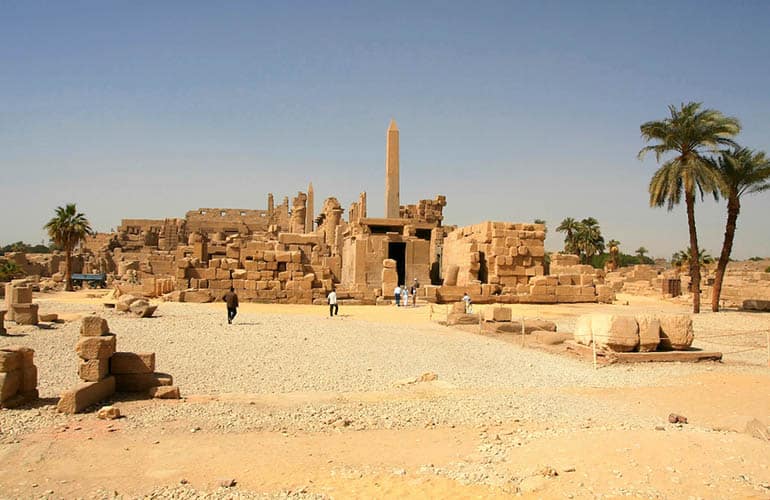When people ask what was the first great capital of ancient Egypt, the most historically grounded answer is Memphis a city that once stood as the political, cultural, spiritual, and administrative heart of the earliest Egyptian state. Located strategically at the meeting point of Upper and Lower Egypt, Memphis served as the foundation from which Egyptian civilization expanded. It was here that pharaohs declared sovereignty, artisans developed the earliest monumental stone architecture, and priests constructed some of the most influential religious ideologies in world history. In understanding Memphis, we understand how Egypt became one of humanity’s most enduring civilizations. Memphis was not merely a city of kings it was a city of creation. According to tradition, it was founded by King Narmer (often identified with Menes) around 3100 BCE, immediately following the unification of the Egyptian kingdoms. The site served as the ideal political midpoint, establishing a physical and symbolic center of power. The city was also the seat of Ptah, the god of craftsmanship and cosmic creation, making Memphis not only the capital of government but also the birthplace of the Egyptian worldview. Over time, its influence extended across architecture, religion, trade, art, and political identity. Even when later capitals such as Thebes and Alexandria rose, Memphis remained a sacred reference point for legitimacy.
This article explores Memphis in depth its geography, cultural meaning, political authority, religious institutions, pyramidal legacy, economic structure, daily life, decline, rediscovery, and restoration. The goal is to offer new, meaningful insight, beyond what is typically summarized in textbooks or travel guides.
Where Memphis Was Located and Why It Mattered
Geography shaped Egyptian history, and Memphis is the best example of this relationship. The ancient Egyptians chose Memphis not by chance, but by strategic calculation.
Memphis sat:
- At the junction of the Nile Valley and the Nile Delta
- Near the only navigable routes from the Mediterranean inland
- On slightly elevated ground safe from annual floods
- At the midpoint between Upper (southern) and Lower (northern) Egypt
This location provided three major advantages:
- Political neutrality – neither Upper nor Lower Egypt could claim dominance.
- Economic centrality – goods from the Mediterranean, Africa, and the Near East passed through Memphis.
- Agricultural wealth – the surrounding land yielded crops that supported a large population.
Memphis was where ideas, goods, beliefs, and power converged, forming the earliest roots of Egyptian state identity.
Key Historical Facts About Memphis, Egypt
| Category | Details | Historical Importance |
|---|---|---|
| Approximate Founding | ~3100 BCE under King Narmer | Marks the political unification of Egypt |
| Primary Deity | Ptah, god of creation and craftsmanship | Memphis becomes theological center of royal legitimacy |
| Political Role | Capital of Egypt during early dynastic and Old Kingdom periods | Birthplace of centralized government |
| Geographic Position | Southwest of modern Cairo, near Nile Delta apex | Made Memphis a trade and military crossroads |
| Nearby Necropolises | Saqqara, Dahshur, Giza | Centers of pyramid development and royal burials |
| Economic Identity | Industrial and trading center for craftsmen and merchants | Supported massive state projects including pyramids |
| Later Status | Retained religious and symbolic power even after capitals shifted | Coronation center into Roman era |
The City at the Center of Divine Kingship
To understand Memphis, one must understand Ptah. Unlike gods associated with storms or war, Ptah was a creator through thought and word. Creation did not come from battle or chaos, but from mind, intention, precision, and craft.
This idea influenced every sphere of Memphis:
- Architecture became an act of sacred precision.
- Craftsmanship was a religious expression, not just labor.
- The pharaoh was believed to manifest Ptah’s creative order on earth.
Thus, the central temple of Ptah in Memphis was not merely a place of worship it was the intellectual and ideological engine of ancient Egyptian civilization. The priests of Ptah were among the most influential religious scholars in the ancient world. They wrote hymns, inscriptions, and royal legitimization texts. They instructed architects, artists, and scribes. Many of the most sophisticated symbolic conventions of Egyptian art proportional grids, orientation, posture originated here
Memphis and the Birth of the Pyramid Age
Most people imagine Giza when they think of pyramids. But Giza only exists because Memphis existed.
The great pyramid fields of:
- Saqqara
- Dahshur
- Giza
were considered part of the Memphis cultural region.
The Step Pyramid of Djoser (Saqqara)
The earliest monumental stone building in history. Its architect, Imhotep, was a Memphite priest of Ptah.
The Bent and Red Pyramids (Dahshur)
Engineering prototypes, demonstrating trial, correction, and innovation.
The Great Pyramids of Khufu, Khafre, and Menkaure (Giza)
The most iconic symbols of ancient civilization, built and staffed by the bureaucratic system anchored in Memphis.
Memphis provided:
- The workforce housing
- The stone workshops
- The religious rituals that explained pyramid meaning
- The legal administration organizing labor and resources
Without Memphis, the pyramid age would not have been possible.
Daily Life in the First Global City
Memphis was a city of workers, traders, craftspeople, scribes, and priests.
Unlike later capitals that depended on imported labor, Memphis was self-producing. The workshops of Memphis turned out:
- Carved limestone vessels
- Gold and faience jewelry
- Pottery, textiles, and embalming materials
- Furniture and ritual objects
Artisans belonged to guild-like administrative groups, each loyal to the temples that supervised them. Temples in Egypt were also:
- Banks
- Archives
- Schools
- Political courts
The city was also multi-cultural. There is evidence of:
- Nubian traders
- Libyan herders
- Levantine merchants
- Mediterranean sailors
Memphis was, in every sense, a cosmopolitan ancient capital.
Festivals, Rituals, and the Living Religion of Memphis
Memphis hosted some of Egypt’s most influential festivals, including:
The Festival of Ptah
A celebration of creation, renewal, and craftsmanship. Artisans displayed mastery. The pharaoh reaffirmed divine legitimacy.
The Embalming Rituals of the Sacred Apis Bull
The Apis bull, believed to be an earthly manifestation of Ptah, lived in Memphis. Its death and burial rituals shaped:
- Mummification techniques
- Tomb design
- Funerary processions
Coronation Ceremonies of Pharaohs
Even when Egypt’s capital had shifted, coronation remained in Memphis.
To be king of Egypt, one had to be king by Memphis.
Political Shifts and Decline
Memphis did not fall suddenly. It transformed.
Thebes Rises
During the Middle and New Kingdoms, Thebes becomes a spiritual capital linked to Amun. Memphis remains:
- Industrial center
- Military headquarters
- Coronation seat
Alexandria Rises
Under the Greeks, Alexandria becomes a philosophical and maritime capital. Memphis remains:
- A religious monument city
- A cultural memory
- A pilgrimage site
Even in decline, Memphis endured.
Archaeological Rediscovery and Modern Importance
Most of Memphis lies beneath:
- Soil deposits from Nile shifts
- Village and farmland layers
- Ruins that were dismantled for later building material
But Saqqara, its necropolis, is one of the most active archaeological sites in the world today. Recent findings include:
- Sealed tombs
- Mummies with preserved clothing
- Artisan workshops
- Administrative papyrus records
Each excavation returns Memphis to visibility not just as ruins, but as a system of thought.
In recognition of its importance, UNESCO designated the Memphis and its Necropolis region as a World Heritage Site.
Why Memphis Still Matters Today
Memphis was the first city to express the idea that society could be ordered by knowledge, craft, and written law rather than violence or tribal dominance. It helped define:
- Urban planning
- Divine monarchy
- Architectural mastery
- Bureaucratic governance
- Artistic symbolism
In other words Memphis is where civilization learned to build itself.
To understand Memphis is to understand:
- How humans learned to construct meaning
- How people turned belief into architecture
- How rule, religion, and craft intertwined to shape society
Memphis is not only a city of the past. It is one of the foundations of human history.
Conclusion
Memphis, Egypt, is the beginning of one of the world’s most influential civilizations. It shaped how societies govern, build, believe, and organize themselves. Its spirit endures not only in pyramids and temples, but in the continued human pursuit of order, beauty, and continuity. Memphis was never just a capital. It was the birthplace of the idea of civilization.











